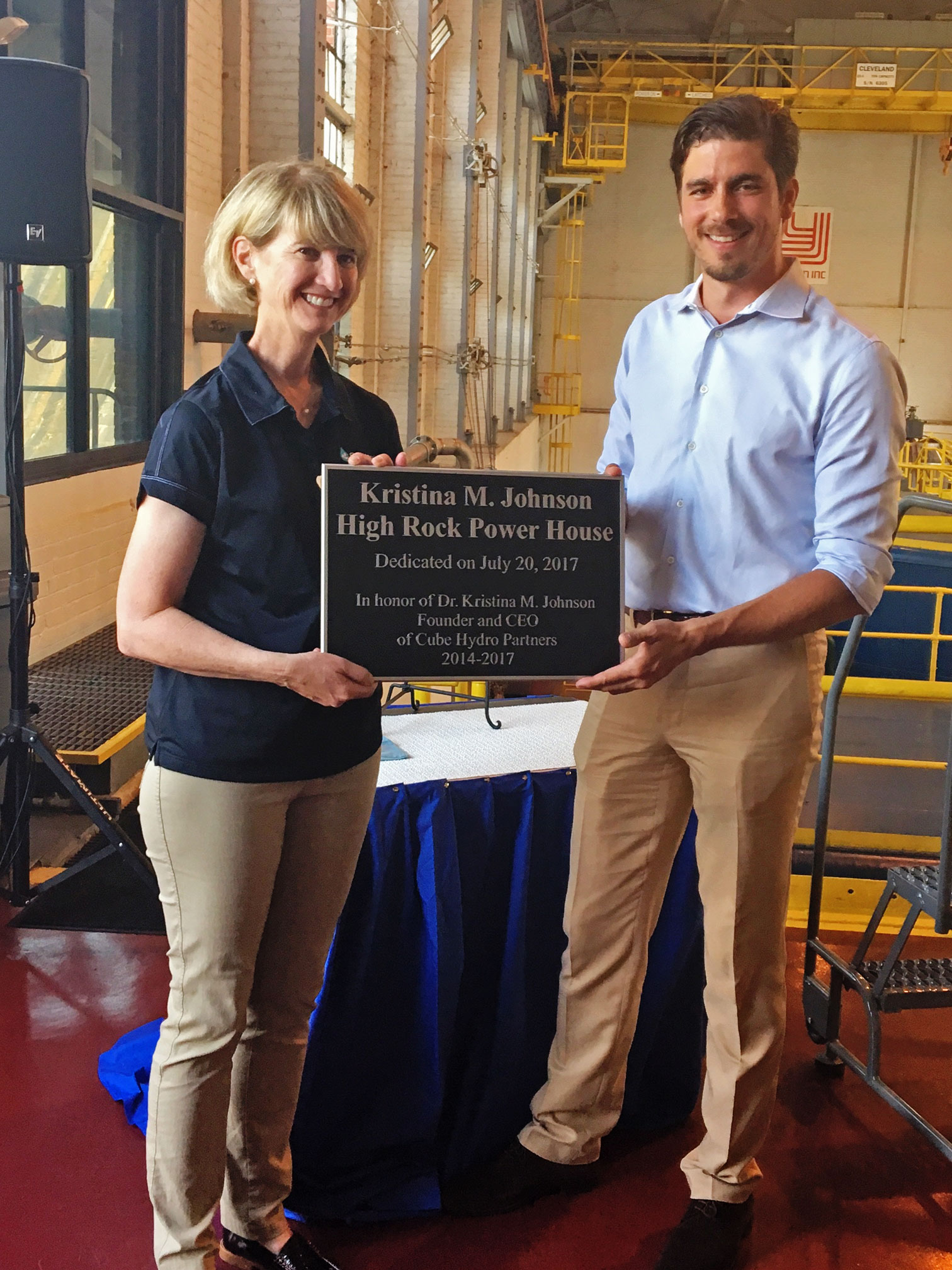
As we gear up to welcome our 13th chancellor to SUNY next month – an inventor, entrepreneur, and all around wonder woman in science, Dr. Kristina M. Johnson – we wanted to take a look at some of the experiences that have led this champion of renewable energy to SUNY and just a sample of complementary activities in SUNY’s wheelhouse.
Dr. Johnson knows science and energy. She is the outgoing CEO and co-founder of Cube Hydro Partners, a company she built in order to demonstrate the value of renewable hydropower while reducing our nation’s reliance on carbon-based energy. Before that, she spent time as the U.S. Under Secretary of Energy under President Barack Obama. Her work in developing hydropower energy solutions at Cube Hydro has made a noticeable difference in the mid-atlantic and southern economies and environment. It is a difference she hopes to bring to her role here at SUNY and in New York.
The work done in college and higher education prepares students with applicable skills that the workforce, economy, and society need. There’s quite a lot of variety to these of course. But in 2017, with what we see in dynamic climate change, the use of cleaner, more efficient energy solutions is something in need and being called for by business, society, and education. We see it at SUNY through our sustainability efforts. There are solutions to develop at scale, and those opportunities can surely come from our classrooms and research labs.

So what is Cube Hydro’s operation all about? And how did Dr. Johnson put it to work? Let’s find out.
Creating Renewable Energy for the Future
Cube Hydro, founded in 2014, is a hydropower development and operating platform headquartered in Maryland that targets investments in mid-sized greenfield and operating hydro projects in North America. The company and its affiliates own and operate 19 hydropower plants on ten rivers in five states, all of which produce enough electricity to power approximately 140,000 homes with renewable energy.
Hydroelectric power is simply generated when running water flows down into turbines or generators that can convert the power of the flowing water into usable electricity. Running water is all around us, so there are many opportunities to generate hydro power. Dr. Johnson is a firm supporter of hydropower and believes it should be recognized as another component of renewable energy sources on the same level as wind and solar energy. A healthy balance can only be achieved when all sources are used together.
Recently, Cube Hydro Partners dedicated their High Rock Power House in North Carolina to Dr. Johnson. It was she who led the successful acquisition of High Rock, now 90 years old, and three other hydropower plants along the Yadkin River for Cube Hydro, and she now leads the current multimillion dollar project to modernize these facilities.
“I am grateful for this recognition and for the exceptional team of experienced professionals at Cube Hydro,” said Dr. Johnson. “It’s been an honor to serve as CEO of Cube Hydro Partners and I am proud of the work we have done to develop renewable energy projects and bring economic and social benefits to local communities.”
By utilizing unpowered dams and modernizing existing infrastructure, Cube Hydro can work to bring clean, renewable hydropower to many communities and reduce the reliance on carbon fuels.
Energy at SUNY
Powering 64 campuses with hundreds of facilities and vehicles is no easy challenge. With our sheer size, SUNY uses a lot of energy to keep the lights on and provide environments that are comfortable and encouraging to learning. Among the state operated campuses (non-community colleges), we use more than 1.3 million megawatt hours (MWh) of energy per day, or as much as nearly 130,000 average homes in New York. An average home uses 10-12 MWh of electricity per year, or 25-30 kWh per day. A deeper look into renewable energy can continue to improve our carbon footprint into the future.
Renewable energy use at SUNY is on the rise too. Among our state-operated campuses, more than 7 MWh of solar and wind energy is generated each day. The potential for more hydropower and renewable energy use is immense in New York State. Governor Cuomo’s Executive Order 88 sees this too, as it calls for a 20% decrease in average Source Energy Use Intensity by 2020. This progress can be measured through our partnership with the New York Power Authority and its Energy Manager software. See how this works:
From our commitment to increase sustainability, signing on to the White House American Campuses Act on Climate Pledge in 2015, and other efforts in clean energy, our students and faculty are set to be the energy leaders of tomorrow.
Dr. Johnson’s term as the 13th Chancellor of SUNY begins on September 5th. With a leader who is as attuned to science, business and energy as Dr. Johnson, it will be exciting and interesting to see what the future of energy and sustainability at SUNY can be.



